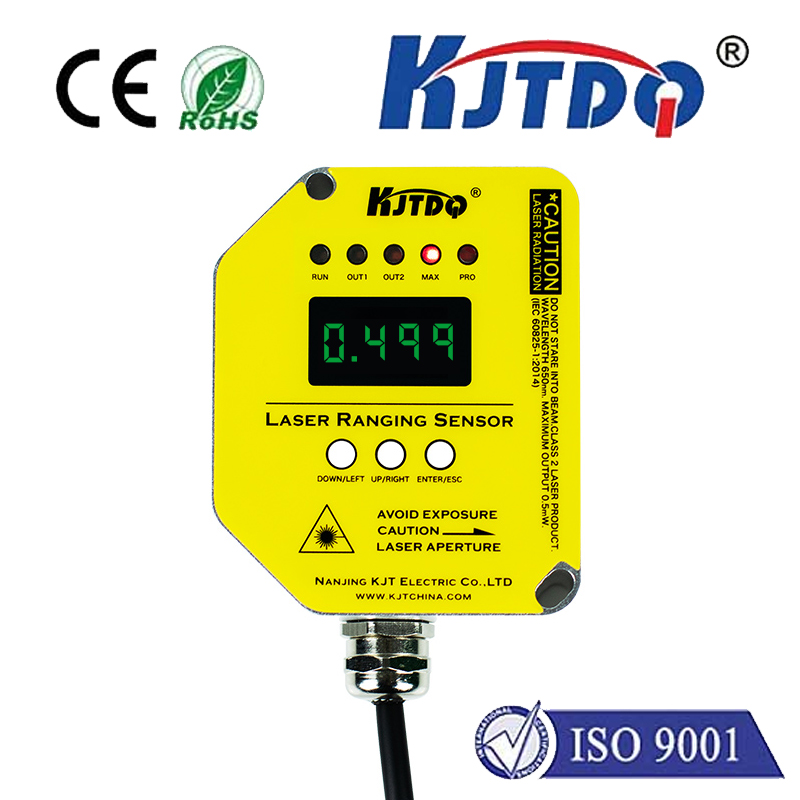随着科技的不断发展,激光测距传感器已经成为许多领域中不可或缺的工具。本文将详细介绍激光测距传感器的原理、应用以及如何实现一个简单的激光测距传感器程序。
一、激光测距传感器原理
激光测距传感器是一种利用激光脉冲进行距离测量的设备。其基本原理是:当激光器发出一束短脉冲光,经过物体反射后,再次回到激光器的时间差即为物体到激光器的距离。通过计算这个时间差,我们可以得到物体与激光器之间的距离。
二、激光测距传感器应用
1. 机器人定位与导航:在工业生产中,机器人需要精确地掌握自身的位置信息。激光测距传感器可以为机器人提供实时的位置数据,帮助机器人实现自主导航和定位。
2. 三维建模:在建筑、工程等领域,激光测距传感器可以用于对物体的实际尺寸进行测量,从而为三维建模提供准确的数据支持。
3. 环境监测:激光测距传感器可以用于对环境进行监测,如测量建筑物周围空间的距离,以确保建筑物的安全性能。
4. 家庭安防:激光测距传感器可以用于家庭安防系统中,如检测门窗是否关闭,防止盗窃行为的发生。
三、实现一个简单的激光测距传感器程序
下面我们将介绍如何使用Python语言实现一个简单的激光测距传感器程序。在这个程序中,我们将使用Arduino控制器和HC-SR04超声波传感器来实现激光测距功能。
1. 首先,我们需要准备硬件设备:Arduino控制器、HC-SR04超声波传感器、杜邦线若干。
2. 将Arduino控制器连接到计算机上,并安装Arduino IDE软件。
3. 编写Arduino程序:
```cpp
#include
#define TRIGGER_PIN 12 // Arduino pin tied to trigger pin on the ultrasonic sensor.
#define ECHO_PIN 11 // Arduino pin tied to echo pin on the ultrasonic sensor.
#define MAX_DISTANCE 200 // Maximum distance we want to ping for (in centimeters). Maximum sensor distance is rated at 400-500cm.
NewPing sonar(TRIGGER_PIN, ECHO_PIN, MAX_DISTANCE); // NewPing setup of pins and maximum distance.
void setup() {
Serial.begin(9600); // Open serial communication to prepare for reading data from Arduino's Serial port.
}
void loop() {
delay(50); // Wait 50 milliseconds between each ping for max accuracy. The HC-SR04 sends out a ping signal and listens to the echo return. The time it takes for the sound waves to travel to and back from the object and into the sensor is measured and used to calculate the distance.
unsigned int uS = sonar.ping(); // Send ping, read ping time in microseconds (uS) and convert it to centimeters (cm) (uS*0.034/2). HC-SR04 max distance is usually around 400-500 cm depending on how long the sound waves take to reach and bounce back.
Serial.print("Distance: "); // Convert cm to feet and display on serial monitor with "ft" postfix (e.g, "Distance: 2"). See note below on conversion factor from cm to ft. Note that this will be off by an order of magnitude depending on your scale factor (e.g. if you're using metric vs imperial units). You may need to adjust for this based on your actual use case.
Serial.print(uS * 0.034 / 2); // Distance in feet is calculated using formula: distance = duration of pulse * speed of sound (cm/us) * conversion factor (1m/100cm = 3.28 ft/1ft). This gives an accuracy of about ±1 cm (depending on your scale factor). If desired, you can round up or down to the nearest whole foot with round(), floor() or ceiling(). e.g. round() rounds to nearest whole number, floor() rounds down to nearest whole number less than or equal to current number, ceiling() rounds up to nearest whole number greater than or equal to current number but less than next higher whole number.
Serial.println(); // End of line character after printing distance value. Now send another ping to see if object was hit (i.e. distance has changed) since last measurement. If no change in distance is detected, then assume object is stationary object and stop sending more pings (this could be useful for battery life saving purposes when measuring large objects). If there is a change in distance detected, then continue sending more pings until the object has stopped moving (or reached a certain distance limit).

















